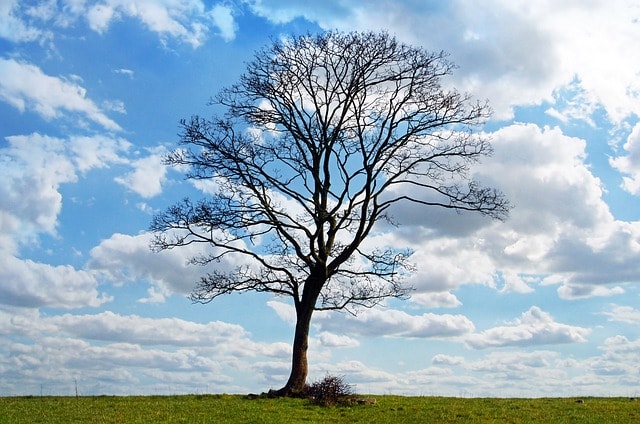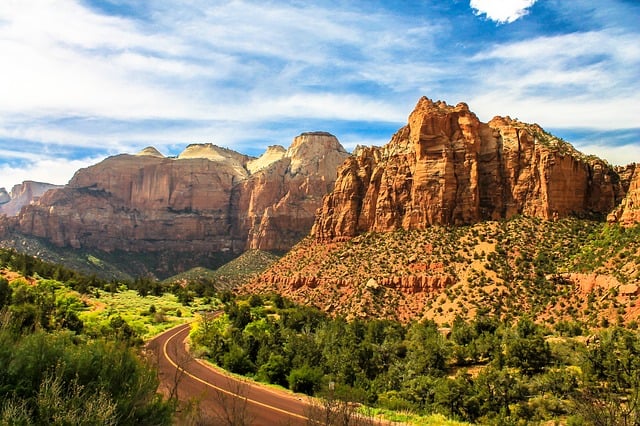What Causes Pink Sunsets?

At one time or another everyone has marveled at the beautiful reddish-orange hues of a sunrise or sunset. Although red-orange sunsets are common everywhere, certain regions are famous for pink sunsets. The deserts and urban cities quickly come to mind.
Why do some parts of the world enjoy more unusual colors in the setting sky than others, and what causes them? What are the different sunset colors? What do pink sunsets indicate? These and the science behind sunset colors are explored in the paragraphs that follow.
What Causes Pink Sunsets?
During sunrise and sunset, the rays of the sun must pass through almost 30 to 40 percent more area of the atmosphere than they do during any other times of the day, and a greater number of dust or water vapor before they reach human eyes.
The shorter violet and blue wavelengths in the spectrum scatter away from the human field of vision. However, the longer yellow, orange, and red wavelengths of light do not scatter as much. Thus, the sky takes a yellow, orange, and red palette.
You might wonder where ‘pink’ came, as pink isn’t a wavelength in the visible spectrum; its appearance is caused solely by the mixing of red with white. Experts consider pink a variant of red wavelength.
Coming to the science behind the pink sunset, it’s all about the strange tricks light can do with color. Also, about the distance sunlight has to travel and how many ‘atmospheric particles’ the light has to get through to get to our eyes. The more the particles in the atmosphere, the more the light scattering and the more vivid the sky appears.
Summer sunsets in certain parts of the world tend to cover the sky entirely with red, orange, or pink shades while winter sunsets usually give a band of colors. Because there are more haze and dust particles hanging around during the summer season.
According to studies, the atmosphere should contain more aerosols, to get a red or pink sky. Aerosols are fine solid or liquid particles in the air, arising from both natural and anthropogenic sources.
Natural aerosols come from forest fires, sandstorms, or volcanic eruptions. Volcano eruption results in the release of sulfuric acid into the stratosphere layer, causing red or crimson sunsets.
The eruption of Indonesia’s Krakatoa volcano in 1883 resulted in stunningly beautiful crimson sunsets around the world.
Aerosols of anthropogenic origin mainly from internal combustion engines in cars and trucks. Aerosols are also produced when fossil fuel is burned, releasing an enormous amount of sulfur dioxide gas into the air, which then becomes sulfuric acid aerosols.
Most dust particles and water droplets in the atmosphere scatter the light, preferentially replacing violets and blues in the spectrum and enhancing the red, orange, or pink.
What Determines the Sky’s Colors at Sunrise and Sunset?
The bright reds to soothing yellows and soft pinks we see in the sky come from sunlight scattered by air molecules – a phenomenon called Rayleigh scattering.
The longer wavelength reds will be scattered more than the shorter wavelength blues and violets. This is due to the amount of atmosphere the sunlight has to pass through before racing the observer. During the daytime, light travels a shorter distance, thus allowing blue and violet wavelengths through. While at sunset, the light must pass through more atmosphere, scattering violets and blues, leaving yellows, oranges, and reds.
Besides atmospheric gases, water droplets, and dust particles, air pollutants also determine the sky’s color at sunrise and sunrise. Aerosols suspended in the air scatter sunlight into a band of colors. When there are more aerosols or smog, more sunlight is scattered, resulting in purple or pink sunsets.
What are the Different Sunset Colors?
While the series of colors in a sunset may hold a certain allure by themselves, there’s more to the story than just a pretty picture
Purple or Violet sunsets
When aerosols of volcanic origin reach the stratosphere and scatter blue light, a purple-ish color is produced. Scientists found that the purple color thus produced is often preceded by a yellowish arch near the horizon. When the sun is low on the horizon, violet frequencies emerge from the yellow, filling the sky with a purple tinge.
Purple sunsets aren’t an everyday thing; it is most often associated with volcano eruption or hurricane. Florida has witnessed a beautiful purple-tinged sky after Hurricane Michael.
Yellow sunsets
Sometimes sunsets are yellow. When the polychromatic sunlight passes through atmospheric particles, it gets scattered along with different angles of deviation. During sunset, the light travels a maximum distance, causing the shorter wavelengths to scatter more than the longer ones. This explains how all other colors of the visible spectrum are filtered out and yellow/orange/red is left. Yellow sunsets are seen after a storm or hurricane passes.
What Causes the Red Sky at Sunset?
Blue skies and red sunsets result from a phenomenon called scattering.
Sunlight comprises the entire range of frequencies of the visible spectrum. However, not all frequencies are equally intense. Meaning, sunlight consists mostly of yellow light frequency. That’s why the sun appears yellow during the day (most prominent during midday).
The sun’s appearance changes with the time of day. While sunlight may be yellowish during midday, it gradually changes color nearing sunset – the result of a phenomenon called scattering.
At sunset, the light has to graze a greater pathlength through the atmosphere than at noon. Due to this, light is forced to interact with more air, dust, soot and ashes, pollen, or cloud droplets. As we know the shorter the wavelength, the more the interaction with solid particles and more will be the scattering. Thus, violets and blues get scattered away from the line of sight, leaving reds and oranges to be seen.
What is the Color of the Sunset on Mars?
The earth witnesses different colors of sunsets. What about the red planet? Pictures by the Curiosity, Spirit, and Opportunity rovers by NASA confirmed the Martian sunsets to be blue.
The bluish tinge is said to be attributed to the planet’s distinctive atmosphere. The density of atmospheric gas in Mars is just 1 percent of what it is on Earth. Now add the air full of carbon dioxide and iron-rich dust into the mix.
According to scientists, the iron particles scatter light primarily in the forward direction. What’s more, they scatter red wavelengths at much wider angles than blue does. As the blues aren’t scattered widely, they become more intense – at least six-fold -than the red light, resulting in blue sunsets and red sky.
Does Air Pollution Affect Sunset Colors?
Intense red sunsets are visible when there are forest fires or volcanic eruptions happening.
Volcanic eruptions send tons of volcanic ash up above the sky, producing heavy smog. Similarly, forest fires also turn the sky nearly opaque with all the ashes and smoke. Burning fossil fuels, plastic products, and aerosol spray cans also send more toxic chemicals and particles into the atmosphere. The major chemicals include greenhouse gases, hydrocarbons, sulfuric acid, and traces of metals.
Be it natural or human-made, the smog can block the light of a certain wavelength. As sunlight passes through aerosols or smog, it changes the color of our skies and sunsets.
Pink, purple, or dark red sunsets are indeed spectacular to watch, but it also indicates our air is heavily polluted.
References:
https://www.nationalgeographic.com/news/2013/10/131027-sunset-sky-change-color-red-clouds-science/
https://solarsystem.nasa.gov/news/925/what-does-a-sunrise-sunset-look-like-on-mars/






